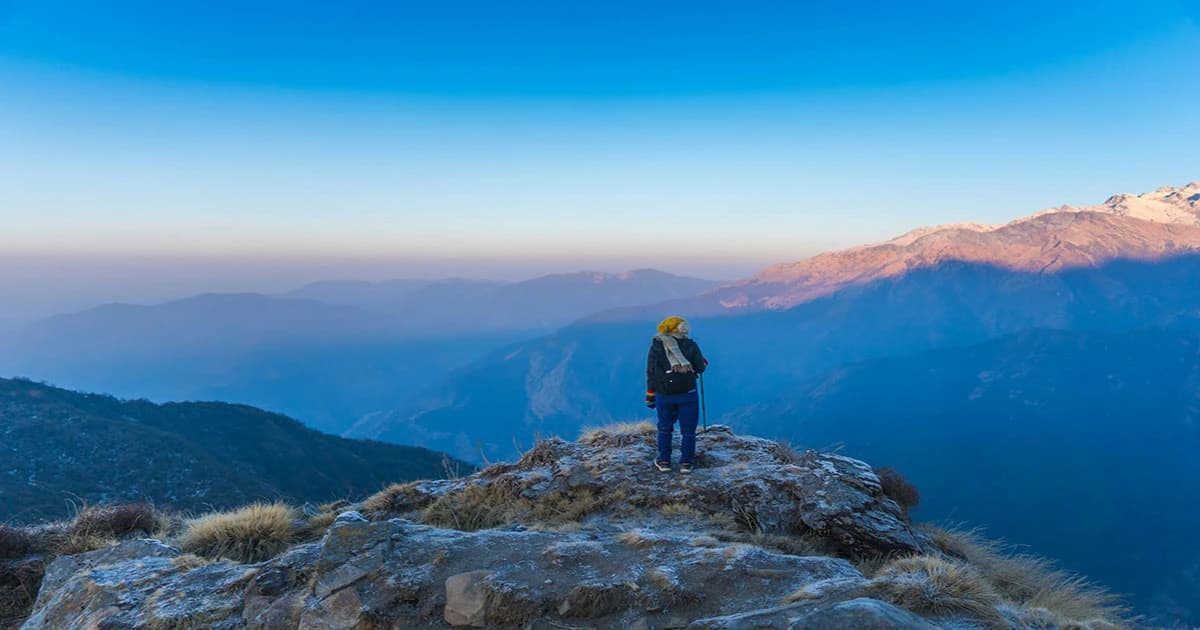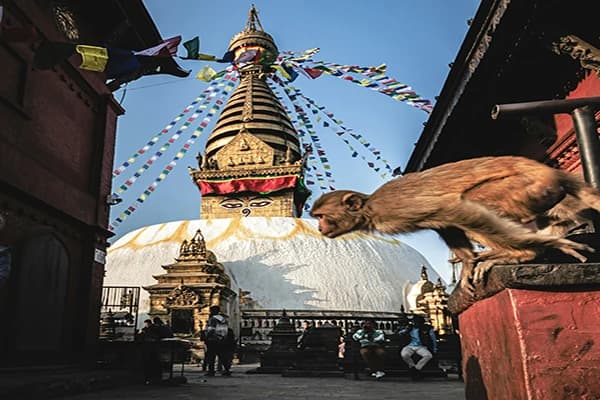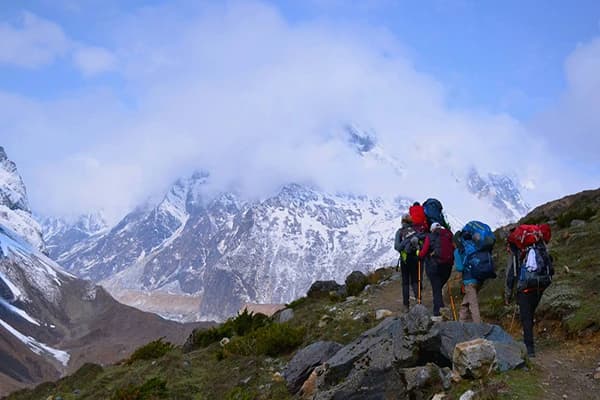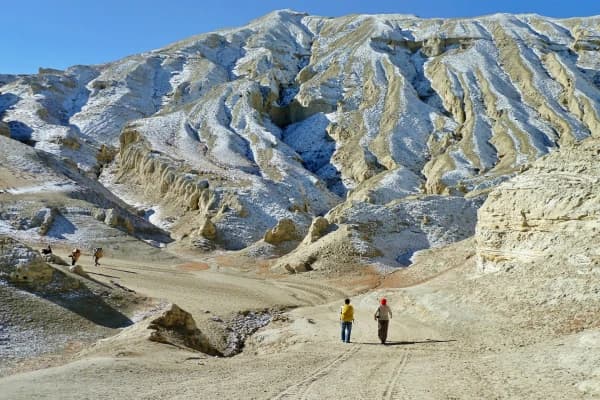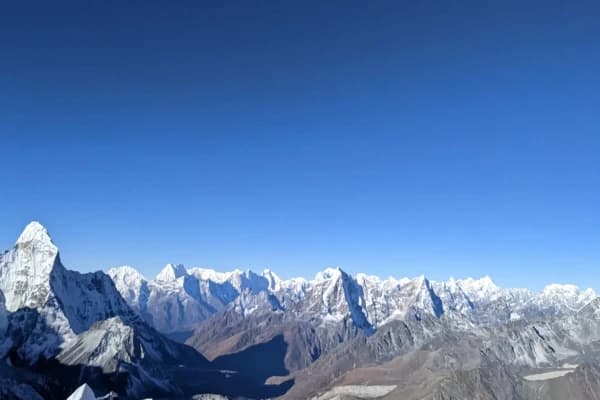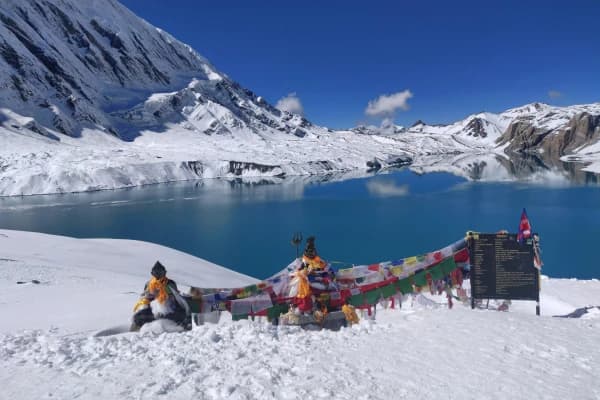Plan your Mardi Himal Nepal Trek with this ultimate guide covering routes, best season, cost, difficulty, and tips for adventure seekers in the Himalayas.
Mardi Himal Nepal Trek: The Ultimate Guide for Adventure Seekers
Introduction to Mardi Himal Nepal Trek
The Mardi Himal Nepal Trek is a beautiful and short hike in the Annapurna area of Nepal. This hike takes you through beautiful villages and lush forests, and it has amazing views of the Himalayas, including the famous Machapuchare, which is also called the Fishtail Mountain.
The Mardi Himal trekking route is quiet and not very busy, unlike other trails. This makes it perfect for people who want a quiet adventure. The Mardi Himal Base Camp, which is about 4,500 meters (14,764 feet) above sea level, is the highest point on the trek. From this point, hikers can see the Annapurna range in all its glory.
The trek usually takes 11 to 13 days to finish, so it's good for both new and experienced hikers. Along the way, you'll walk through thick rhododendron forests, cross suspension bridges, and stay in cozy teahouses.
If you're planning the trek, you should be ready for different types of weather and have a moderate level of fitness. Getting a guide or joining a group can make the trip better and make sure everyone is safe.
The Mardi Himal Nepal trek is a great way to see the Himalayas and learn about the culture at the same time.
Mardi Himal Nepal Trek Route and Map Overview
The Mardi Himal Nepal Trek is a beautiful trip through the Annapurna region that takes you past stunning mountains, forests, and traditional villages. Trekkers can plan their trip better if they know the route and the map.
Starting Point
-
The hike usually starts in Pokhara, a city known for its lakes and views of the Himalayas.
-
It only takes a short drive from Pokhara to get to Kande or Pothana, which are the main starting points for the trail.
Trek Route Highlights
-
Kande to Forest Camp: A slow climb through terraced fields and small villages.
-
Forest Camp to Low Camp: From Forest Camp to Low Camp, you walk through thick rhododendron forests and see exotic birds and local animals.
-
Low Camp to High Camp: From Low Camp to High Camp, the trail gets steeper and offers great views of Machapuchare (Fishtail), Annapurna South, and Himchuli.
-
High Camp to Mardi Himal Base Camp: The last climb from High Camp to Mardi Himal Base Camp takes you to the base camp at about 4,500 meters, where you can see amazing views of the Himalayas.
Return Route
-
Most of the time, trekkers go back to Pokhara the same way they came, or they take a different route through Siding Village and Lumre.
-
The total distance of the trek is about 40 to 50 kilometers, depending on the route and side trails you choose.
Mardi Himal Map Overview
-
The hike goes through little towns like Kande, Pothana, Forest Camp, Low Camp, High Camp, and Mardi Himal Base Camp.
-
Some of the most important places to see are Machapuchare Base View, rhododendron forests, and traditional Gurung villages.
-
A trekking map shows where to camp, where to get a good view, and how the altitude changes along the way.
Tips for Navigating the Route
-
Use maps or GPS devices and stick to marked trails.
-
When you hire a guide through Nepal Excursion, you can be sure of your safety, get to know the area better, and find your way around more easily.
-
Before going up to High Camp or Mardi Himal Base Camp, check the weather.
The Mardi Himal Nepal Trek is great for people who want to see beautiful forests, learn about the culture, and see the Himalayas. Planning ahead with maps and guides makes sure that your trek is safe and fun.
Trek Itinerary (13 Days)
The Mardi Himal Nepal Trek is a beautiful hike through the Annapurna area. A 13-day itinerary gives trekkers time to explore at a leisurely pace, take in the beautiful views, and get used to the altitude. Here is a suggested daily schedule:
Day 1: Arrival in Kathmandu
-
Get to Kathmandu city and check into your hotel.
-
Get your trekking permits (ACAP and TIMS) and meet your guide.
-
After your flight, go to nearby markets and relax.
Day 2: Kathmandu to Pokhara (820 m / 2,690 ft)
-
You can drive or fly to Pokhara, which takes about 6 to 8 hours by car.
-
Stay the night in Pokhara and enjoy the views of the lake and the local food.
Day 3: Pokhara to Pothana (1,100 m / 3,609 ft)
-
Drive a short distance to Kande, then begin your trek to Pothana.
-
Walk through terraced fields, small streams, and villages.
-
Stay the night at the Pothana teahouse.
Day 4: Pothana to Forest Camp (1,650 m / 5,413 ft)
-
Hike through rhododendron forests and see the mountains in the distance.
-
Find birds and walk along quiet nature trails.
Day 5: Forest Camp to Low Camp (2,850 m / 9,350 ft)
-
Slowly climb up while taking in stunning views of Machapuchare, Annapurna South, and Hiunchuli.
-
Stay the night at Low Camp.
Day 6: Low Camp to High Camp (3,550 m / 11,646 ft)
-
A steep hike through forests and over rocky paths.
-
Along the way, enjoy views of the Himalayas from all sides.
-
Stay at High Camp overnight.
Day 7: High Camp to Mardi Himal Base Camp (4,500 m / 14,764 ft) and Back to High Camp
-
Hike to Mardi Himal Base Camp in the early morning.
-
Take pictures and enjoy the Himalayas for a while.
-
Go back to High Camp for the night.
Day 8: High Camp to Low Camp
-
Take the same path down slowly, taking in the sights of the forest.
-
Stay at Low Camp overnight.
Day 9: Low Camp to Pothana
-
Keep going down through small villages and rhododendron forests.
-
Stay the night at the Pothana teahouse.
Day 10: Pothana to Pokhara
-
Walk back to Kande and then drive to Pokhara.
-
Take a break and look around Lakeside Pokhara.
Day 11: Pokhara Free Day
-
You can choose to go sightseeing, boat on Phewa Lake, or see Davis Falls and the World Peace Pagoda.
Day 12: Pokhara to Kathmandu
-
You can drive or fly back to Kathmandu.
-
Shopping or seeing the sights at the last minute.
Day 13: Departure from Kathmandu
-
Get to Tribhuvan International Airport for your next flight.
This 13-day Mardi Himal Base Camp trek itinerary strikes the perfect balance between adventure, getting used to the altitude, and seeing the sights, making sure that trekkers have a great time the whole time.
Permits, Costs & Logistics
It's important to know about the permits, costs, and logistics when planning the Mardi Himal Nepal Trek. If you get ready properly, your trekking trip will go smoothly and be fun.
1. Required Permits
-
ACAP Permit (Annapurna Conservation Area Permit): You need this to trek in the Annapurna region, which includes Mardi Himal.
-
TIMS Card (Trekkers’ Information Management System): Is needed by all trekkers in Nepal for safety and registration reasons.
-
You can get both permits in Pokhara or from your guide.
2. Trek Costs
-
Permits: ACAP (about $30) and TIMS (about $20).
-
Accommodation and Food: Teahouses cost $10 to $20 per night, and meals cost $5 to $10 per meal.
-
Guide and Porter: For safety and ease, it is best to hire a guide (about $25–30 per day) and a porter (about $20 per day).
-
Transport: You can drive from Kathmandu to Pokhara (about $20–30 by tourist bus) or fly (about $90–100).
3. Logistics & Transportation
-
You can easily get to Pokhara by road or air from Kathmandu, so start your trek there.
-
The distance you walk each day can be anywhere from 5 to 10 kilometers, and some parts have moderate to steep climbs.
-
You can find places to stay in small villages like Pothana, Forest Camp, Low Camp, and High Camp.
-
If you go on a Nepal Excursion guided tour, you can be sure that all of the details, permits, and places to stay will be taken care of.
4. Tips for Smooth Logistics
-
Always have copies of your passport and permit with you.
-
Make sure to book your transportation ahead of time, especially flights between Kathmandu and Pokhara.
-
When making your budget, think about food, lodging, guide fees, and other costs that might come up.
For a safe and fun trek to Mardi Himal Base Camp, it's important to know about permits, costs, and how to get there. If you plan ahead, you can enjoy the beautiful Himalayan scenery and the adventures along the way.
Accommodation, Food & Safety
When hiking the Mardi Himal Nepal Trek, it's important to know about where to stay, where to eat, and how to stay safe.
1. Accommodation
-
Most of the villages along the way, like Pothana, Forest Camp, Low Camp, and High Camp, have teahouses and lodges.
-
Rooms are simple and have shared bathrooms, but the bedding is warm.
-
During trekking season, it's not usually necessary to book ahead of time, but spring and fall are busy times.
2. Food Options
-
Teahouses serve simple foods like rice, noodles, dal bhat (lentil soup with rice), soups, and momos.
-
Along the trail, you can get snacks, tea, coffee, and energy bars.
-
It's important to stay hydrated, so bring a water bottle that you can fill up again and water purification tablets.
3. Safety Tips
-
Altitude: The highest point is the Mardi Himal Base Camp, which is 4,500 meters high. Go up slowly to avoid getting sick from the high altitude.
-
Weather: Be ready for sudden changes in the weather by bringing warm clothes, rain gear, and sun protection.
-
Health: Bring basic first aid supplies, your own medicines, and medicine for altitude sickness.
-
Porters and guides: If you hire through Nepal Excursion, you'll get help in case of an emergency and easy navigation along the trail.
4. Additional Tips
-
While you are in teahouses, be respectful of the local culture and traditions.
-
Bring small amounts of cash with you because there aren't many ATMs along the way.
-
Don't overpack and keep your valuables safe. Light backpacks make hiking easier.
If you plan ahead for your lodging, food, and safety, your Mardi Himal Nepal Trek experience will be fun, comfortable, and safe from start to finish.
Best Time to Trek Mardi Himal & Final Tips
The Mardi Himal Nepal Trek is a year-round adventure, but some times of the year have the best weather, the best views, and the safest trekking conditions. If you plan your trek for the right time of year, you'll have a great time.
1. Best Seasons for Mardi Himal Trekking
-
Spring (March to May):
-
The rhododendron forests bloom in bright colors.
-
It is great for taking pictures when the skies are clear and the weather is nice.
-
-
Autumn (September to November):
-
The weather is stable, the mountains are clear, and the temperatures are mild.
-
This is the most popular time of year for trekking, so some teahouses may be busier.
-
-
Winter (December to February):
-
There are fewer people and the skies are clear, but it can be very cold and there may be snow at High Camp and Base Camp.
-
-
Monsoon (June to August):
-
Trekking is not a good idea because of the heavy rain, slippery trails, and risk of landslides.
-
2. Final Tips for a Successful Trek
-
Fitness & Preparation: You need to be in good shape, so do some cardio and hiking practice before the trip.
-
Packing: Bring clothes that can be layered, a waterproof jacket, trekking boots, gloves, and something to protect your skin from the sun.
-
Guides & Porters: Hiring a guide or porter through Nepal Excursion makes your trip safer and gives you local knowledge.
-
Acclimatization: To avoid getting sick from the altitude, take breaks when you need them, especially at Low Camp or High Camp.
-
Photography: The best times to take pictures of Himalayan views are early in the morning and late in the afternoon.
If you go trekking at the right time of year and follow these tips, your Mardi Himal Nepal Trek will be safe, fun, and unforgettable. This trek has amazing views of the Himalayas, peaceful forests, and a rewarding experience at Mardi Himal Base Camp, whether you're an adventure seeker, a photographer, or a nature lover.

